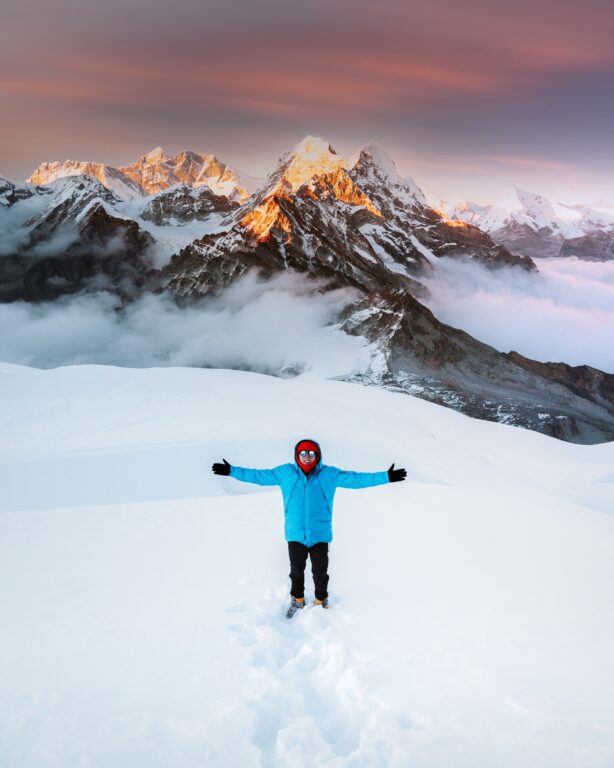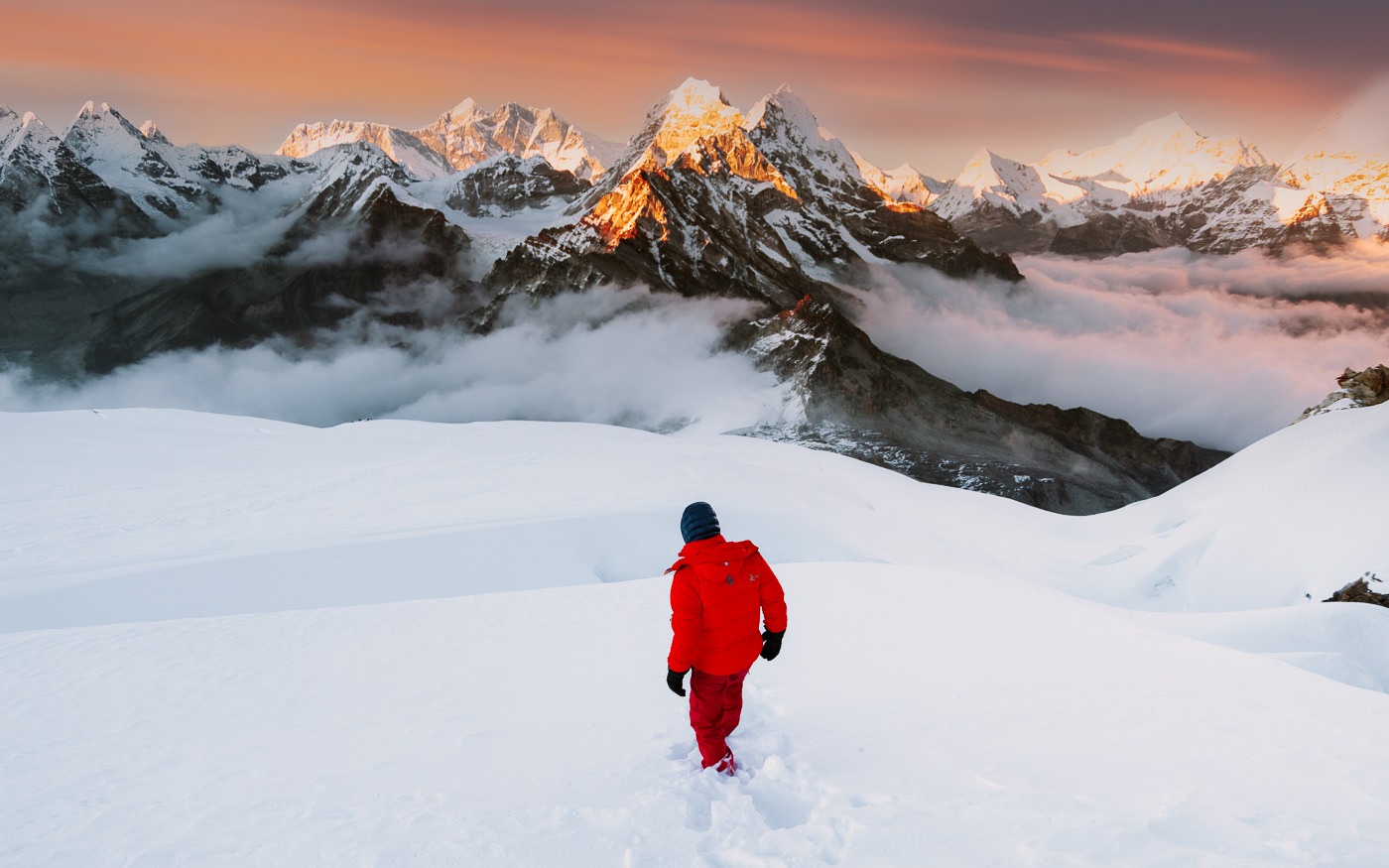A useful guide to help you choose the best trekking travel insurance for high altitude hiking and expeditions without altitude caps.
So, you’re planning an epic adventure, trek or expedition, and you’ve just found out that your regular travel insurance won’t cover you above a certain altitude.
Yep, I’ve been there too.
It turns out, finding quality travel insurance that covers adventure sports like mountaineering or trekking at high altitudes is quite difficult. That’s because most regular travel insurance companies will void coverage above a certain altitude– usually in the range of 4500-5000 meters (14760-16400 feet). Not convinced? Read the small print!
This means that if you’re looking for insurance for the Everest Base Camp trek or for long treks or expeditions in the Nepal Himalayas, Karakoram, or the South American Andes, you’ll want to check out the best rescue and travel insurance policies below.

Quick Answer: Best Rescue Policy
In a rush? I recommend checking out Global Rescue. This is the policy I use as they offer yearly and trek-based memberships that include helicopter rescue coverage with no altitude caps.
The Best High Altitude & Trekking Travel Insurance Policies
Let’s face it, there’s a reason why a regular travel insurance provider will void coverage the minute you step over a certain altitude. That is, things can go wrong in the mountains.
The last thing any trekker or mountaineer wants is to fall into debt after a costly helicopter evacuation mission. Trust me, speaking from personal experience, I’ve seen people fall ill with altitude sickness to the point that they required evacuation. In fact, these issues are likely more common than you think and happen all the time on popular trails like the EBC, Three Passes, or the Machu Picchu Trek.
However, with one of the below trekking travel insurance policies or rescue memberships, you’ll be covered for any medical emergency or evacuation.
1. Global Rescue Membership
Global Rescue offers arguably the most popular rescue memberships on the high-altitude and trekking scene. There’s a reason why most of the major expedition companies and travel agents in Nepal recommend this plan to their clients.
As part of their Travel Services membership, they provide coverage for:
- Worldwide Field Rescue – deployable teams standing by to rescue members in dangerous or remote environments
- Medical Evacuation – deployable medical teams capable of transporting members back to their home country hospitals anywhere in the world
- Medical & Security Advisory – Global Rescue’s staff includes paramedics, nurses, and military special operations veterans who are on-call to advise on security and provide virtual medical assistance in an emergency
- Other travel assistance services – including visa and passport, hospital referrals, translation services, logistics management and coordination
The best part about this rescue and evacuation insurance for trekkers is that there is no altitude cap, meaning this policy will even cover you at the summit of Mount Everest!
Memberships are available on an annual or short-term basis (7, 14, or 30 days), which makes this plan very flexible and affordable.
However, keep in mind that a Global Rescue membership is not a traditional travel insurance plan. This means that you won’t be covered for things like trip cancellations, delays, baggage, or emergency medical and dental. However, they do offer an add-on travel insurance policy with IMG (IMG Signature Travel Insurance), which will cover all of these things, on top of your high-altitude coverage and rescue/evacuation coverage.
Student discount: Global Rescue offers student membership discounts which is great if you’re taking a gap year or semester abroad.

2. Garmin Search & Rescue Insurance (With A Supported Device)
Garmin isn’t a company that you’d traditionally expect to provide travel insurance or high altitude Search and Rescue coverage.
However, this global tech giant has recently begun offering Search and Rescue (SAR) Insurance plans to those who own one of their compatible satellite communication devices like the popular and affordable InReach Mini.
The way that this policy works is that Garmin will cover financial reimbursement up to $100,000 USD for qualified search and rescue related expenses when you use your Garmin satellite device for SOS, resulting in the Garmin IERCC coordinating your rescue. Their insurance memberships are only available as yearly plans.

Due to you needing to use their device to call the helicopter evacuation or search and rescue team, the coverage is very cheap. However, unfortunately, this basic policy has an altitude cap of 5000 meters. As a result, if you are planning to step above this at any point, you’ll have to step up to the High Risk (HR) policy.
The Garmin SAR HR policy covers all adventure sports from rock climbing in remote areas to BASE jumping, to wingsuits– so, you know that this insurance policy will cover any trek or high altitude mountaineering expedition.
I recently purchased this insurance for Mera Peak in Nepal (6476 m) and while I didn’t have to use it, provided me with one of the most cost-effective trekking travel insurance policies for mountains above 6000 meters. Furthermore, the InReach lets me stay in contact with family members with basic SMS messaging over satellite, anywhere on earth.

Tip: Garmin InReach Mini
I’ve been using the Garmin InReach Mini satellite communicator for all serious treks and expeditions since 2020. It lets me send unlimited SMS anywhere on earth and has an emergency SOS feature that could save your life.

3. World Nomads Travel Insurance
World Nomads Travel Insurance is one of the industry leaders in adventure travel insurance and will cover trekking at high altitudes up to 6000 meters.
Looking for trekking travel insurance for the Everest Base Camp Trek or Machu Picchu? This travel insurance provider will be a great option for many popular treks and hikes just like this in the Himalayas or in South America.
That’s because World Nomads is the only traditional insurance company that I know of offering trekking travel insurance above 5500 meters, with a solid claims record and a good reputation in the backpacker and adventure travel community. Their travel insurance plans offer varying levels of cover (Explorer and Standard) but are both quite comprehensive:
- Overseas dental and medical expenses (including altitude sickness)
- Trip protection (trip cancellation)
- Stolen credit cards
- Delayed baggage
- Travel delay
- Emergency evacuation (medical evacuation coverage)
World Nomads have been around for a long time. In fact, I used to use their annual policies when I first started traveling full-time for work, before I switched to the more affordable SafetyWing insurance (4500 m altitude cap)– combined with a Garmin SAR HR for expeditions.

Best Travel Insurance for Trekking Up to 6000m
If you’re planning a trek or mountaineering expedition up to 6000 meters, then you have the option of picking either Global Rescue, Garmin SAR HR (with a supported device), or a World Nomads travel insurance policy.
Both Global Rescue and Garmin SAR HR offer great cover and do not have an altitude cap. However, World Nomads will void the insurance if you step above 6000 meters, including personal accident cover.
Popular trekking peaks below 6000 meters where these plans will have you covered include:
- Summit of Kilamanjaro (5895 m)
- Pico de Orizaba (5636 m)
- Misti (5822 m)
- Carihuairazo (5020 m)
- Yala Peak (5700 m)
- Many accessible peaks in Bolivia
So, if you’re really planning on staying under 6000 meters of elevation, any of the above will do just fine.

Everest Base Camp Travel Insurance
No, there’s no such thing as specific travel insurance for the Everest Base Camp trek. However, just like above, any of my three recommendations will have you covered for the EBC since the highest elevation that you’ll likely reach will be at Kala Patthar (5644 m).

Machu Pichhu Travel Insurance
Unlike Nepal’s EBC or the popular Annapurna Circuit, the Machu Pichhu trail leads to a maximum elevation of just 4215 meters (13 823 feet). As a result, you’ll have a lot more options available to you in regard to insurance that will cover you for the trek and your travels in Peru or South America.
World Nomads will be one of the most comprehensive offerings for your trip, but SafetyWing (more affordable) will also cover you since their elevation limit is 4500 meters.
If you also plan on trekking in the Andes, where you will find higher altitudes, then it might be a good idea to purchase one of the above three insurance policies.
Key Things to Look For in High Altitude Trekking Insurance
I’ve done tonnes of travel insurance research for my own expeditions and treks at high altitude. After close to five years on the road, I also have a personal experience of being forced to make travel insurance claims.
My best advice is to simply read the product disclosure statement (PDS) or similar document outlining everything that is covered, and everything that isn’t covered in case of an accident.
Altitude Limits
The first thing you’ll want to look for in travel insurance for trekking is the altitude limit wording. This is sometimes hidden quite deep in the small print, so be vigilant! Furthermore, you’ll want to check special conditions like the use of rope or ice axe on mountains. Sometimes, travel insurance companies will limit their coverage from technical ascents with these types of disclosures– even if the rope is there for extra safety!
Medical Coverage
Of course, when choosing an insurance policy for high altitude, you’ll want to consider whether or not you need things like medical coverage, including overseas hospital cover and emergency care. That’s because non-traditional search and rescue or evacuation memberships like Global Rescue or Garmin’s SAR HR will not include this. Instead, in the event of a medical evacuation, they will transport you back to your home country’s hospital. This means, if you need to get medical treatment in the country of travel, you will need to pay for the fees.
This can be a good thing, especially in remote regions or countries without high-quality medical care facilities and if you have hospital fees and medical expenses covered at home through your government or medical insurance plans.
Pre-Existing Medical Conditions
Lastly, practically all travel insurance companies will have some kind of specific requirements and wording regarding pre-existing medical conditions. If you do have a pre-existing medical condition, ensure you review this section thoroughly, as some insurers may have a problem if altitude sickness, HACE, or HAPE cause complications with your existing heart, brain, or lung issues.

Get Inspired With These Epic Treks & Adventures
I hope that this short guide to trekking travel insurance for high altitude adventures has helped you get the peace of mind you need for your next big trip! Of course, this article provides only general advice and it might be best to speak to insurance experts before making a call.
However, just remember that AMS or a simply twisted ankle can cost you a lot of money in evacuation fees– even if it’s not a serious injury. Personally, I never embark on any expedition or adventurous activities without being covered for at least search and rescue or evacuation.
If this article has been helpful or if you discover any extra cover options for trekkers at high altitudes, help out by letting me know below!
Alright, insurance talks out of the way. Why don’t you check out some of my more fun articles and blog posts from previous adventures below?

